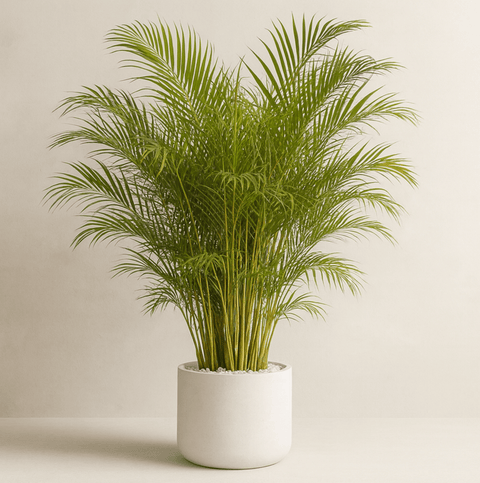Blog Post - Fiddle Leaf Fig Losing Leaves: A Comprehensive Guide to Leaf Health
Table of Contents:
I. Introduction
II. Common Reasons for Fiddle Leaf Fig Losing Leaves
A. Overwatering
B. Underwatering
C. Inadequate lighting
III. Nutrient Deficiencies
A. Common nutrient deficiencies in fiddle leaf fig plants
B. Identifying symptoms of nutrient deficiencies
C. Remedies and fertilization tips
IV. Pests and Diseases
A. Common pests affecting fiddle leaf fig leaves
B. Identifying signs of pest infestation
C. Treatment and prevention measures
V. Environmental Factors
A. Temperature fluctuations and their impact on leaves
B. Humidity levels and their role in leaf health
C. Proper ventilation and air circulation
VI. Conclusion
I. Introduction

Fiddle leaf fig plants, with their large, lush leaves, have become popular houseplants in recent years. These striking plants not only add a touch of elegance to any space but also contribute to a healthier indoor environment. However, it can be disheartening to see your fiddle leaf fig losing leaves. In this comprehensive guide, we will explore the common reasons behind leaf loss and provide insights on how to maintain the health and vibrancy of your fiddle leaf fig leaves.
II. Common Reasons for Fiddle Leaf Fig Losing Leaves
A. Overwatering

Overwatering is one of the leading causes of leaf loss in fiddle leaf fig plants. It is important to understand the symptoms of overwatering, such as yellowing leaves, root rot, and wilting. Excess water saturates the soil, depriving the roots of oxygen and leading to nutrient deficiencies and fungal growth. To prevent overwatering, it is crucial to establish the correct watering practices, including proper drainage and frequency.
B. Underwatering

Conversely, underwatering can also cause fiddle leaf fig leaves to wither and drop. Signs of underwatering include dry soil and drooping leaves. When the soil is too dry, the roots cannot absorb enough water and nutrients, leading to leaf dehydration and stunted growth. Learning how to properly water your fiddle leaf fig, ensuring sufficient moisture without waterlogging the soil, is essential for leaf health.
C. Inadequate lighting

Proper lighting is vital for the optimal growth and foliage of fiddle leaf fig plants. Insufficient sunlight can cause leaves to yellow, brown, and fall off. It is essential to place your fiddle leaf fig in a spot where it can receive adequate natural light. Additionally, for those with low light conditions, there are alternative lighting options that can help provide the necessary light energy for healthy leaf development.
III. Nutrient Deficiencies
A. Common nutrient deficiencies in fiddle leaf fig plants
Nutrient deficiencies can also contribute to leaf loss in fiddle leaf fig plants. Iron, nitrogen, and magnesium deficiencies are among the most common. These deficiencies can lead to yellowing leaves, brown spots, and stunted growth. Understanding the role of each nutrient and identifying the symptoms can help address and prevent nutrient deficiencies in your fiddle leaf fig plant.
B. Identifying symptoms of nutrient deficiencies
Recognizing the signs of nutrient deficiencies is crucial for maintaining leaf health in fiddle leaf fig plants. Yellowing leaves, leaf discoloration, and overall stunted growth are common indicators. By closely observing these symptoms, you can diagnose the specific deficiency and take appropriate remedial action to ensure your plant's leaves remain healthy and vibrant.
C. Remedies and fertilization tips
To address nutrient deficiencies, proper fertilization techniques and remedies are necessary. Choosing the right fertilizer, applying it correctly, and monitoring the plant's response are essential for maintaining healthy leaves. We will provide useful tips and guidelines on fertilization to help you enhance the nutrient levels and overall health of your fiddle leaf fig plant.
IV. Pests and Diseases
A. Common pests affecting fiddle leaf fig leaves
Pests can wreak havoc on the leaves of your fiddle leaf fig plant. Spider mites, mealybugs, and scale insects are among the most common pests to watch out for. These pests feed on the plant's sap and weaken its overall health, leading to leaf loss and deterioration. Recognizing these pests and understanding their impacts is vital for effective pest management.
B. Identifying signs of pest infestation
Detecting signs of pest infestation on your fiddle leaf fig leaves is crucial for timely intervention. Webbing or white cottony residue, sticky residues on leaves, and visible pests on leaves or stems are common indicators of pest presence. By regularly inspecting your plant and taking appropriate measures, you can mitigate the damage caused by pests and protect the health and beauty of your fiddle leaf fig leaves.
C. Treatment and prevention measures
Treating and preventing pest infestations in fiddle leaf fig plants requires a multi-faceted approach. Effective treatment methods, such as using natural or chemical remedies, and preventive measures, like maintaining a clean and healthy environment, can help control and prevent future infestations. We will provide valuable tips and techniques to eradicate pests and safeguard the vitality of your fiddle leaf fig leaves.
V. Environmental Factors
A. Temperature fluctuations and their impact on leaves
Temperature fluctuations can greatly affect the health and condition of your fiddle leaf fig leaves. Extreme temperatures, both hot and cold, can lead to leaf loss, discoloration, and overall stress. Understanding the ideal temperature range and taking precautions during seasonal changes can help maintain the vibrant appearance and health of your fiddle leaf fig leaves.
B. Humidity levels and their role in leaf health
Humidity also plays a significant role in the well-being of fiddle leaf fig leaves. Low humidity can cause leaves to dry out and drop, while excessive humidity can create an environment for fungal growth. Maintaining appropriate humidity levels, both through natural and artificial means, is crucial for promoting healthy leaf growth and preventing leaf loss in your fiddle leaf fig plant.
C. Proper ventilation and air circulation
Adequate ventilation and air circulation are essential for the overall health and vitality of fiddle leaf fig plants. Stagnant air can increase the risk of diseases, pests, and moisture-related problems, which can ultimately cause leaf loss. By providing proper air circulation and ventilation, you can create an optimal environment for your fiddle leaf fig, allowing the leaves to thrive and remain healthy.
VI. Conclusion
Understanding the reasons behind fiddle leaf fig losing leaves is crucial for maintaining the health and vibrancy of this popular houseplant. By addressing common issues, such as overwatering, underwatering, inadequate lighting, nutrient deficiencies, pests, diseases, and environmental factors, you can ensure your fiddle leaf fig leaves remain in optimal condition. Remember to be attentive to your plant's needs, provide proper care, and explore further fiddle leaf fig care guidelines to cultivate a flourishing and beautiful indoor oasis.























Comments (0)
There are no comments for this article. Be the first one to leave a message!